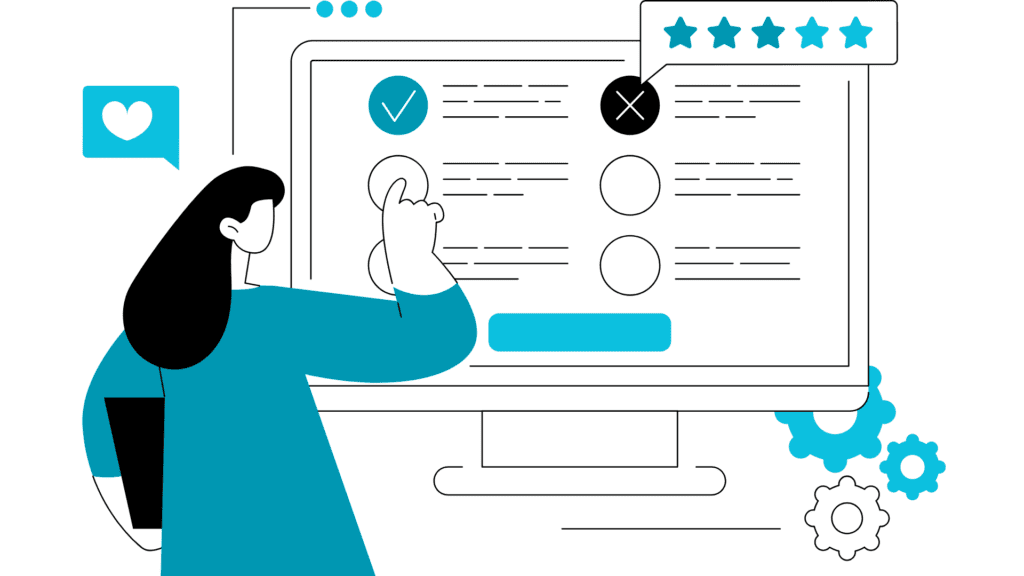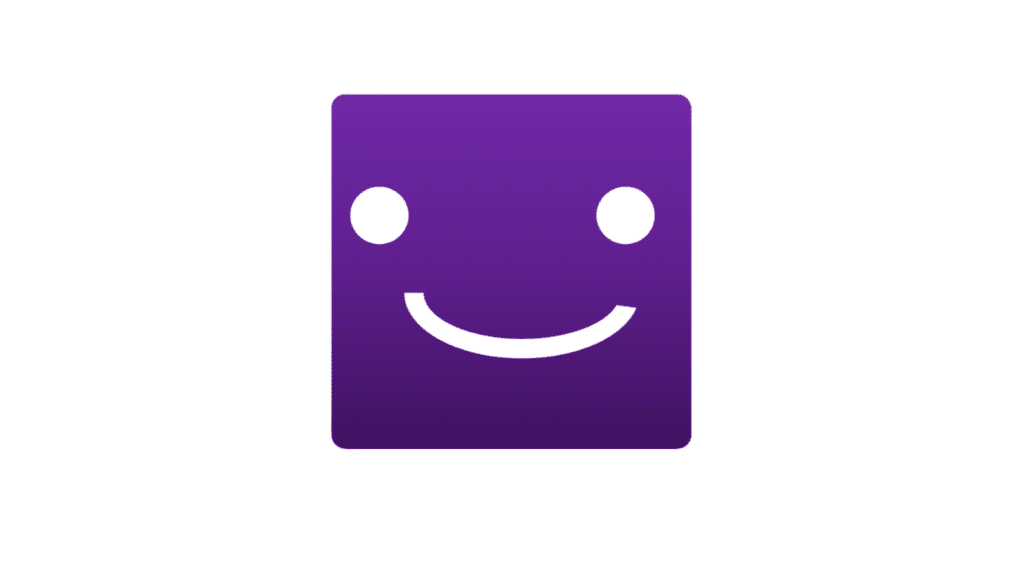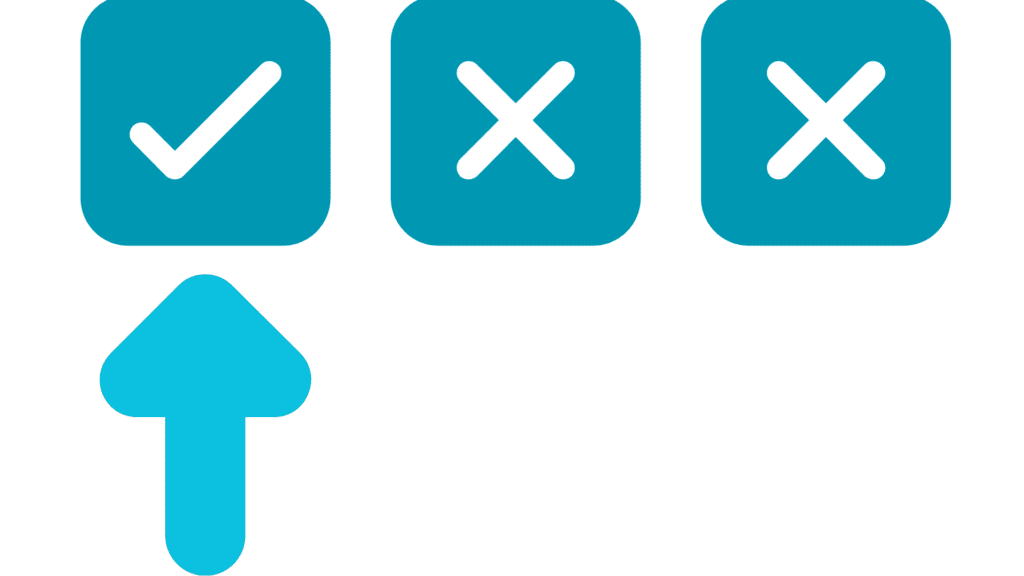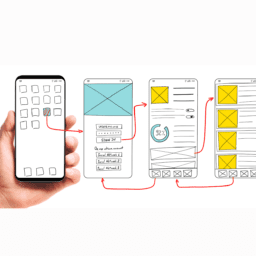Last Updated: October 25, 2023
Welcome to Membership Tracking Rollercoaster 🎢
Do you have any idea that
Why is it important for organizations to keep track of members, and what are the benefits of setting up a method to do this?
All kinds of organizations, like companies, clubs, nonprofits, and associations, need to keep track of their members for a number of important reasons.
The most important thing is that it lets communities keep a full record of their members, which helps them stay organized and up to date on their members.
📚 Why You Should Read This? 📚
Curious about what successful membership tracking is? We’ll decode their secrets, explaining how and why they’re used, so you can make the most of them.
We are ready to expose you to everything you wonder about membership-related tracking, please keep scrolling!
🔑 Key Points We’ll Explore:
- Understanding Membership Tracking
- Benefits of Membership Tracking
- Tracking Member Engagement and Participation
- Analyzing and Reporting Membership Data
- Member Retention Strategies with Membership Tracking
- Selecting the Right Membership Tracking Software
The Benefits of Implementing a Membership Tracking System
Implementing a membership tracking system offers numerous benefits.
It streamlines administrative tasks by automating processes such as
- Member Registration
- Renewals
- Event Management
This efficiency translates to time and cost savings, allowing organizations to allocate resources more effectively.
Moreover,
Membership tracking enhances member engagement. Organizations can personalize communication and offerings based on member preferences and behaviors, leading to higher satisfaction and retention rates.
Understanding Membership Tracking
Please allow us to define a few things for you.
That way, we can ensure that you fully understand the concepts of the topic.
What do these things mean? Let’s explore!
Types of Memberships and Their Tracking Needs:

👤 Individual Memberships: Organizations with individual members need to manage personal information (name, contact details), membership status (, and membership history.
👥 Family Membership: When memberships include entire families, tracking needs include names, ages, and connections.
🏢 Corporate or Organizational Memberships: Organizations serving corporations or institutions must manage firm names, contact persons, and staff lists.
⏭️ Tiered Memberships: Companies with many membership levels (e.g., basic, premium, VIP) must track member tiers, benefits, and expiration dates.
👩🏼🎓 Student Memberships: Schools and student organizations may track enrolment, graduation, and student IDs.
📈 Key Data and Metrics to Keep Track of for Tiered Memberships:

- Membership Renewal Rates: Keep an eye on the number of members who renew their memberships. This will help you figure out how satisfied members are and how well the perks of membership work.
- Churn Rate: Figure out how many members don’t renew their memberships. This will show you what parts of the membership services might need to be improved.
- Engagement Metrics: Keep track of how many times members participate in activities, events, or online platforms to see how engaged they are and change your offers to match.
- Financial Data: To keep the organization’s money well-managed, keep track of membership fees, dues, gifts, and other money activities.
- Event Attendance: Keep an eye on which people show up to meetings, events, and conferences to get a sense of how popular and useful they are.
- Feedback and Surveys: To make your organization better based on facts, ask members for their opinions through polls or reviews.
Benefits of Membership Tracking
The benefits help organizations succeed and grow by building strong ties between members, making operations more efficient, and letting people make decisions based on data.
It helps communities serve their people better, reach their goals, and do well in a competitive environment.
Benefit #1: Better Member Engagement
Organizations can learn more about their members when they track their membership. This lets them connect with them more personally, get them more involved, and build stronger relationships with them.
Benefit #2: Efficiency and Automation
Using a membership keeping system makes administrative chores like event planning, renewals, and registrations easier, saving time and lowering the amount of work that needs to be done by hand.
Benefit #3: Informed Decision-Making
Keeping track of member data gives organizations useful information that helps them make smart choices about how to best meet the needs and wants of their members.
Benefit #4: Improved Member Retention
Organizations can find members who are likely to leave by keeping an eye on their involvement and renewal rates. They can then make focused efforts to keep those members.
Benefit #5: Personalized Communication
Targeted and personalized communication, like customized emails and event invites, is made possible by tracking members’ memberships. This leads to higher reaction rates and happier members.

Benefit #6: Financial Management
Automating the collection of dues and tracking of money makes sure that organizations have accurate books and a stable financial situation.
Benefit #7: Membership Growth
Knowing which types of memberships or programs work best can help businesses become more appealing to new members and offer more services.
Benefit #8: Compliance and Reporting
Keeping track of members helps companies stay in line with legal and regulatory requirements and makes it easier to report for audits and other reasons.
Benefit #9: Member Benefits Optimization
Organizations can improve their services and benefits for members by keeping track of how often members use them. This makes membership packages more valuable and makes members happier.
Benefit #10: Event Success
Keeping track of which members attend events and workshops helps groups plan better and make better use of their resources, which in turn helps them figure out how successful their gatherings were.

Tracking Member Engagement and Participation
Businesses, communities, and organizations need to keep track of member involvement and participation to see how well their programs are working, make sure members are happy, and make smart choices.
Here’s how to figure out how engaged your members are and how much they’re participating and doing:
Define Your Goals:
To begin, make your goals clear. Why do you want to keep track of group involvement and engagement? Are you trying to get more people involved, keep friends, or get more people involved in the community?

Identify Key Metrics:
Figure out which measures will help you reach your goals the most. Some common measures of involvement are:
- Registration and sign-up rates
- Active members (daily, weekly, or monthly)
- Participation in discussions, forums, or events
- Content creation and sharing
- Member feedback and surveys
- Time spent on the platform/community
Select Tracking Tools:
Pick the right tools to gather and examine the data. This could include software for managing relationships with customers, platforms for data (like Google data), or specific platforms for getting people involved in communities.
Collect Data:
Set up ways to keep track of member actions and collect data on them. To do this, you may need to use cookies, set up user accounts, or add tracking codes to your website.

Analyze Data:
Look at the data you’ve collected on a regular basis to learn new things. Look for patterns, trends, and strange things. Keep an eye on how engaged people are over time, the types of members you have, and how certain events or projects affect people.
Segment Your Audience:
Divide your audience into categories based on their traits, actions, or other things that are important to you. That way, you can make your involvement plans fit the needs of different groups.
Monitor Member Feedback:
Keep an eye on member feedback: Get member feedback through polls, feedback forms, or direct conversations. Use this feedback to learn more about what they want and need.
Analyzing and Reporting Membership Data
Analyzing and reporting membership data is essential for organizations to make informed decisions, identify trends, and improve their strategies.
Creating Custom Reports:

Identify Key Metrics: Determine which metrics are most critical for your organization. This could include membership growth, retention rates, engagement levels, revenue generated from members, or any other relevant data points.
Data Collection: Gather data from various sources, such as your CRM system, website analytics, email marketing tools, and surveys. Ensure data accuracy and consistency.
Data Cleaning: Clean and preprocess the data to remove duplicates, errors, and inconsistencies.
Use Visualization Tools: Utilize data visualization tools like Microsoft Power BI, Tableau, or even Excel to create visually appealing and informative charts and graphs.
Customize Reports: Tailor your reports to your organization’s specific needs. Create reports that focus on particular aspects of membership data, such as acquisition, engagement, or financial performance.
Automation: If possible, automate the report generation process to ensure that data is always up to date and readily available.
Membership Tracking App: A membership tracking app is a software tool that helps organizations monitor and manage their members’ information and activities. That’s why membership tracking is a must-have feature when creating app reporting.
Interpreting Data for Informed Decision-Making:

Trends Analysis: Look for trends over time. For example, are membership numbers increasing or decreasing? Is there a seasonal pattern to engagement?
Segmentation: Segment your membership data by demographics, behavior, or other relevant factors. This can help you understand which groups are most valuable or at risk.
Comparative Analysis: Compare current data to historical data or benchmark against industry standards to identify areas for improvement.
Correlation Analysis: Examine relationships between different data points. For instance, does higher engagement correlate with increased retention?
Identify Pain Points: Identify areas where your organization may be struggling, such as high churn rates or low conversion rates.
ROI Analysis: Calculate the return on investment for different membership-related initiatives. Determine which activities yield the most value.
Real-World Examples of Successful Membership Data Analysis:
Netflix: Netflix analyzes viewer data to recommend personalized content to its members. Their data-driven approach to content recommendations has contributed significantly to their success.

Amazon Prime: Amazon uses data analysis to offer tailored product recommendations and pricing to its Prime members, increasing their engagement and loyalty.

Professional Associations: Many professional associations analyze member data to identify trends in industry participation, engagement with resources, and the effectiveness of continuing education programs.
E-commerce Loyalty Programs: Companies like Sephora and Starbucks analyze membership data to reward loyal customers with personalized discounts and offers, increasing customer retention and sales.
Member Retention Strategies with Membership Tracking
Keeping members is important for an organization’s long-term success. Keeping track of membership data can help you find members who might leave and tailor your engagement strategies to help you keep them.
🗝️ Tip: Remember that member retention isn’t just about keeping members; it’s also about giving them a group or service that makes their lives better over time.
Take a look at this step-by-step guide on how to use membership tracking to keep members:
Data-Driven Member Segmentation:
- You can divide your members into groups based on their behavior, hobbies, and level of involvement by using membership tracking data.
- Find at-risk members in these groups by looking at members who are participating less, logging in less often, or doing less.
- Make sure that your strategies for keeping customers are tailored to the needs and wants of each group.
Personalized Communication:
- Make personalized contact plans for people who are at risk to get them involved again.
- Send them specific emails, in-app updates, or texts that show how valuable their membership is and encourage them to use it.
- Use how they’ve interacted with you and what they like to suggest content, events, or tools that are important to them.
Feedback and Surveys:
- Actively ask people who are at risk for leaving to give you feedback on why they are leaving.
- Do polls or one-on-one talks to find out what they’re worried about and what they expect.
- Make changes and improvements based on what members say to fix problems and make their experience better.
Exclusive Offers and Incentives:
- Members who are at risk should be given special discounts, perks, or prizes to encourage them to stay involved.
- Give this group access to exclusive deals or paid material that other people can’t get.
- Show your thanks for their service and dedication to your group.
Re-Engagement Campaigns:
- Create focused efforts to get members who are at risk of leaving back in.
- To get this group interested again, plan events, classes, or projects just for them.
- Use stories and examples of people who were able to get involved again to motivate others.
Selecting the Right Membership Tracking Software
Selecting the right membership tracking software is essential for organizations to effectively manage their memberships, engage with their members, and collect relevant data.

Factors to Consider When Choosing Membership Tracking Software:
1-Membership Management Features
Ensure that the management software offers essential membership management features, such as member profiles, renewals, registration, and membership status tracking.
2-Integration Capabilities
Check whether the software can integrate with other tools you use, such as email marketing platforms, payment gateways, or CRM systems.
3-Customization and Flexibility
Look for software that allows you to customize fields, forms, and membership levels to suit your organization’s specific requirements.
4-User-Friendly Interface
A user-friendly interface is crucial for easy adoption by your team. Ensure that the software is intuitive and straightforward to use.
5-Reporting and Analytics
Robust reporting and analytics tools are essential for tracking member engagement, retention, and other key metrics.
6-Payment Processing
If you collect membership fees, ensure that the software supports secure and efficient payment processing, including recurring payments and multiple payment methods.
7-Member Communication Tools
Look for built-in communication tools like email campaigns, newsletters, and event notifications to engage with your members effectively.
8-Data Security and Privacy Compliance
Ensure that the software complies with data security standards and privacy regulations, especially if you collect sensitive member information.
9-Customer Support and Training
Assess the level of customer support and training offered by the software provider to assist you in case of issues or questions.
10-Cost
Consider your budget and the model of the software. Some options offer monthly subscriptions, while others charge based on the number of members or features used.
Free Membership Tracking Software
- Raklet offers a free plan with essential membership management features.
- Includes member profiles, event management, communication tools, and online payments.
- Suitable for non-profits, associations, clubs, and communities looking for a no-cost option.
- MemberPlanet offers a free plan with basic membership management features and membership tracking software free
- Provides tools for member registration, event management, and communication.
- Suitable for small clubs, non-profits, and associations looking for a cost-effective solution.
- While Memberful primarily offers a paid subscription-based model, they do provide a free trial and membership tracking software free.
- Memberful is known for its integration with websites and content platforms, making it ideal for content creators, bloggers, and online communities.
- Offers membership management, subscription billing, and access control for digital content.
Paid Membership Tracking Software
- MemberClicks offers a range of paid plans with various features tailored to associations and chambers of commerce.
- Provides customizable membership databases, event management, and communication tools.
- Ideal for medium-sized organizations seeking advanced functionality.
- MemberSuite is a paid solution designed for medium to large associations, professional organizations, and trade associations.
- Offers a comprehensive suite of membership management, CRM, and event planning tools.
- Suited for organizations that require robust, integrated features.
- YourMembership offers paid plans for associations, chambers, non-profits, and trade organizations.
- Provides membership management, online communities, and integrated job boards.
- Suitable for organizations with diverse needs and a desire for community engagement
- You can manage WordPress membership tracking and receive reporting with plugins.
- Some paid plugins you can use for this;
Final Tour!
It’s time to part.
We’re just kidding 😂, but we are happy to say that you have come to the end of this post.
We hope you found every detail you were looking for.
Let’s see what we talked about briefly, shall we? ✨
Tracking members is an important part of all kinds of groups, like businesses, clubs, nonprofits, and associations.
Setting up good membership tracking systems not only makes basic tasks like signing up and renewing easier, but it also makes members more interested in the organization by sending them personalized messages and giving them special deals.
Also, analyzing data from tracking members helps people make smart decisions, which leads to better methods for keeping members.
In today’s competitive world, membership tracking software is essential for helping groups grow and reach their goals, whether it’s for better financial management, event planning, or safety.
FAQs about Membership Tracking
1. Why is membership tracking important for organizations?
Keeping track of members helps groups stay organized, up-to-date, and involved with their members. It makes routine chores easier, gets members more involved, and helps people make decisions based on data.
2. What data should be tracked for different types of memberships?
Keep track of personal information and participation records for each unique membership. For family members, list their names, ages, and how they are connected. Tiered memberships need to keep track of tiers, perks, and expiration dates. Corporate memberships need company names and contact information.
3. How can membership tracking improve member retention?
By keeping track of members, businesses can find those who might be at risk and tailor their involvement tactics to them. Organizations can keep members longer by giving them special benefits, focused messages, and ways to give feedback.
4. What benefits does membership tracking offer organizations?
Membership tracking helps members be more involved, saves time by automating tasks, makes decisions based on accurate information, keeps members longer, sends personalized messages, manages finances, and creates growth possibilities.
5. What are some key metrics to track for tiered memberships?
Renewal rates, churn rates, involvement metrics (like how many activities or events members attend), financial data (like fees and dues), event attendance, and member feedback through polls or reviews are some of the most important metrics for tiered memberships.






